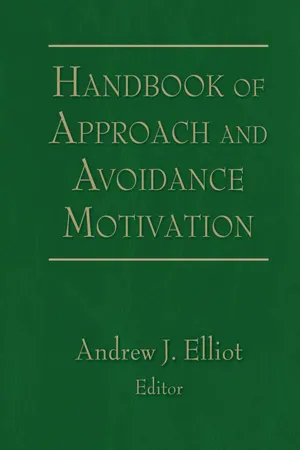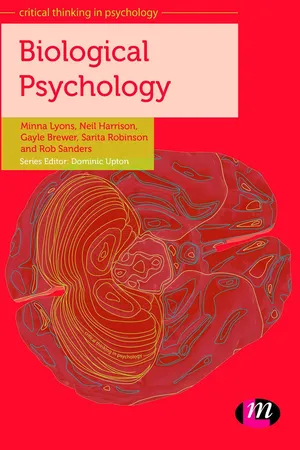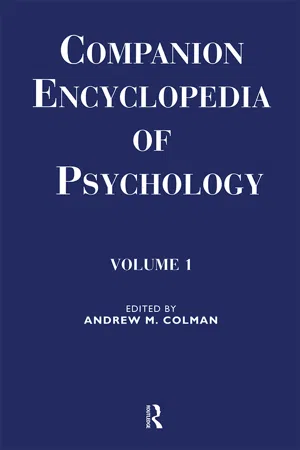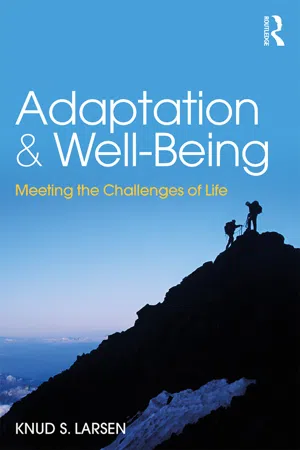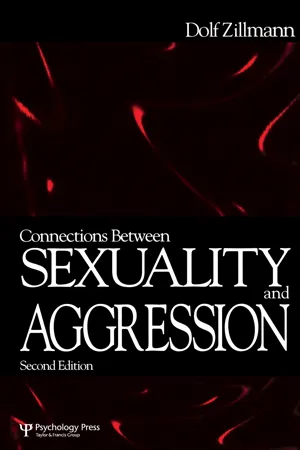Psychology
Sexual Motivation
Sexual motivation refers to the psychological and physiological factors that drive individuals to engage in sexual behavior. It encompasses a wide range of influences, including biological, social, and cultural factors. Understanding sexual motivation is important in studying human behavior, relationships, and overall well-being.
Written by Perlego with AI-assistance
Related key terms
11 Key excerpts on "Sexual Motivation"
- eBook - ePub
- Nancy Fenton, Jessica Flitter, Jessica Flitter(Authors)
- 2015(Publication Date)
- Research & Education Association(Publisher)
Biological aspects impacting the development of primary sex characteristics and sex drive include the presence of specific sex hormones. Sex hormones include estrogens (the female sex hormones) and androgens, such as testosterone (the male sex hormones). An early researcher of Sexual Motivation and behavior was Alfred Kinsey, who along with his colleagues conducted interviews with thousands of American men and women, asking about their sexual behaviors. Kinsey’s controversial research provided statistics and increased the public and scientific understanding of sexual behavior. Researchers Masters and Johnson expanded the understanding of Sexual Motivation by investigating the anatomy and physiology of the human sexual response cycle in laboratory studies. Their research revealed the four stages of the sexual response cycle, which include in order: excitement, plateau, orgasm, and resolution phases. This research was used to develop methods of treatment for individuals with sexual disorders. Social Motivation The area of social motivation includes the human drives to belong with others, to form relationships, and to achieve success and excellence. Humans have a strong need to relate to others, and evolutionary psychologists believe that this motivation to create bonds was naturally selected because it allowed for increased chances of survival. Affiliation motivation involves the human need to belong and form attachments with others. This drive to develop social bonds leads individuals to seek connections with others by participating in clubs, attending social events, and establishing friendships. Social motivations also include drives to engage with others in order to attain a level of excellence in a particular skill, career, or behavior. Achievement Motivation Achievement motivation involves the desire or drive to attain a level of excellence or success by overcoming difficult challenges - eBook - ePub
- Donald Munro, John F. Schumaker, Stuart C. Carr(Authors)
- 2014(Publication Date)
- Routledge(Publisher)
He portrayed sex as a biological drive, such as thirst or hunger, endogenous to the individual, likening the drive to a form of sexual energy (also called libido) that is hidden and depicted as a kind of inner wellspring. An individual first experiences a buildup in sexual tension or sexual need, and as sexual activity is experienced, the drive is satiated and the need reduced. Kinsey saw sexual behavior in terms of outlets and orgasms, whose frequency might vary but whose meanings were constant across culture and through history. Individual differences in drive (motivation) were recognized but were assumed to result from the underlying biology or psychology of the individual, not from any cultural influences (Irvine, 1990 ; Laumann et al., 1994). Sociobiologists like Symons (1979) also privilege biology in their accounts of the evolution of human sexual behavior. It takes the form of hidden (or yet to be discovered) genetic codes governing complex and different patterns of male and female motivations for sexual behavior and mate choice. These are attributed to the evolutionary forces of natural and sexual selection that are said to operate differently on males and females, and result in a number of cultural universals governing sexual behavior. In the case of the male, this would include preference for polygyny, heightened intrasexual competition, and attraction to young women. Feminist critics note that there is hardly any sexual behavior, activity, or preference that has not been attributed to genes and evolution by the sociobiologists (Hatfield & Rapson, 1996). Psychoanalytic Reductionism The second category of studies features the quest for motivations that, although hidden in the unconscious, are universal and can be discovered or revealed by the psychodynamically informed ethnographer. A classic in this genre is Altschuler’s (1971) study of the Cayapa, a tribal group in South America - eBook - ePub
- Andrew J. Elliot, Andrew J. Elliot(Authors)
- 2013(Publication Date)
- Psychology Press(Publisher)
The latter can be thought of as an agentic striving to the extent that it involves mastery and control of one’s emotional experience (McAdams, 1984). In contrast, sexual behavior motivated by social concerns might serve attachment or communal needs, such as having sex to achieve intimacy and communion in a relationship, or to gain another’s approval. Thus, although intrapersonal motives can be pursued in an interpersonal context (as when one uses sex to self-affirm), and both intrapersonal and interpersonal motives can be seen as ultimately originating from a desire to manage one’s emotions (either by direct manipulation of feeling states or indirectly by obtaining a valued outcome from a socially significant other), these motives nevertheless can be differentiated by the degree to which the outcomes sought are primarily self-focused or internal to the individual versus other-focused or external to the individual (i.e., social). We hypothesized that these two dimensions combine to yield four broad classes of motivations for sexual behavior: (a) self-focused approach motives, such as having sex to enhance physical or emotional pleasure (i.e., enhancement motives); (b) self-focused avoidant motives, such as having sex to cope with threats to self-esteem or to minimize negative emotions (i.e., coping motives); (c) social approach motives, such as having sex to bond with socially significant others (i.e., intimacy motives); and (d) social avoidant motives, such as having sex to avoid social censure or rejection (i.e., peer- and partner-approval motives). We validated this framework in a series of studies (Cooper et al., 1998, Studies 1–3). First, to determine how well people’s spontaneously generated motives fit the hypothesized framework, we asked undergraduates to list the most important reasons why they had sex on a recent occasion of intercourse - eBook - ePub
Sexuality and Sex Therapy
A Comprehensive Christian Appraisal
- Mark A. Yarhouse, Erica S. N. Tan(Authors)
- 2014(Publication Date)
- IVP Academic(Publisher)
In this model sexual desire may be conceptualized as a spectrum: aversion—disinclination—indifference—interest—need—passion (Levine, 2003, p. 280). As an influential factor our social situations may affect whether the experience of desire is likely or problematic. For example, a couple with a newborn baby may have very different levels of sexual desire compared with a childless couple. Another factor to consider is gender. Research suggests that female sexual drive may be more affected by social situations compared with male sexual drive. Other influences can stimulate sexual desire, such as wanting to be pregnant, listening to a sexually stimulating exchange between partners or repairing a recently troubled relationship.Sexual Motivation and drive may not be consistent; for example, a person may experience sexual drive that is not directed toward his or her partner. Although an individual may behave in a way that suggests relational commitment, the thoughts of being sexually intimate with someone other than his or her partner may create feelings of guilt or secrecy that disrupts desire (Levine, 2003).Interestingly, most of the early models of the sexual response cycle were linear and based primarily on biological drive. The models often assumed sexual desire was present and then described essentially physiological changes that occur during various stages, for example, excitement, plateau, orgasm and resolution (Masters & Johnson, 1970).Helen Singer Kaplan and Harold Leif independently proposed a category of persons who experienced low sexual desire. Leif’s version (Inhibited Sexual Desire) and Kaplan’s version (Hypoactive Sexual Desire) both opened the door to new understanding of sexual desire, as it had previously been assumed that problems in sexual functioning had a physiological basis or were due to performance anxiety (Kaplan, 1995). These new understandings ushered in an era of examining possible intrapsychic and interpersonal or relational contributions to sexual disorders. - eBook - ePub
- Minna Lyons, Neil Harrison, Gayle Brewer, Sarita Robinson, Rob Sanders(Authors)
- 2014(Publication Date)
- Learning Matters(Publisher)
Though many of the findings in this area stem from animal research, there are important differences between the sexual behaviour of humans and the behaviour of other species. In particular, the sexual responses and abilities of humans are influenced by a range of emotions and cognitions. For example, it is argued that a lack of sexual interest is often related to difficulties within the relationship and withdrawal of sexual intimacy may be an adaptive response to an unstable or unsatisfying relationship (Bancroft, 2002). Similarly, women are aware of their own menstrual cycle stage and fertility (Small, 1996) and may modify their sexual activity in response to the likelihood of pregnancy. The context in which sexual behaviour occurs is also important. Unlike non-primates, humans and other primates mate during the non-fertile phase (Wallen, 2001) and during pregnancy (Pazol, 2003), while sexual behaviour rarely occurs in public due to moral and legal guidelines. Research in this field has, of course, been hindered by a range of ethical and methodological issues.Sexually mature adults are not constantly sexually motivated, and a suitable stimulus such as an attractive mate is typically required. Therefore the first phase of the sexual pleasure cycle (also referred to as the sexual response cycle) is the development of sexual desire. In motivation terms this is consistent with the concept of wanting (Berridge, 1996). A range of sexual stimuli may increase desire, and the recognition and processing of these stimuli are associated with specific areas of brain activation. For example, pheromones are associated with activity in the occipitotemporal cortex, orbitofrontal cortex and hypothalamus (Zhou and Chen, 2008).The majority of research studies investigating the impact on sexual stimuli focus on visual material, which activates areas such as the anterior cingulate cortex, amygdala and hypothalamus and clearly attracts attention (van Lankveld and Smulders, 2008). For men, sexual arousal in response to sexual stimuli is category specific, i.e. heterosexual men are aroused by images of women and homosexual men are aroused by images of men. In contrast, heterosexual and homosexual women are both aroused by images of men and women (Chivers et al., 2004). There are, of course, also individual differences: controls demonstrate deactivation in the media orbitofrontal cortex (an area associated with the control of motivations) in response to sexual images, whereas activity in this area remains in men with hypoactive sexual desire disorder. Furthermore, sexual images are associated with deactivation or unchanged activity in the secondary somatosensory cortex, anterior cingulate cortex and frontal lobes of men with hypoactive sexual desire disorder but associated with activation in controls (Stoleru et al., 2003). - eBook - ePub
Companion Encyclopedia of Psychology
Volume One
- Andrew M. Colman(Author)
- 2018(Publication Date)
- Routledge(Publisher)
In a multi-authored volume (Geer & O'Donohue, 1987), a variety of theoretical approaches to understanding human sexuality was presented. These included sociological approaches such as scripting theory, feminist psychology, cognitive psychology, psychoanalysis, learning theory, anthropology and the evolutionary approach. While the interest and relevance of most of these approaches is apparent, what is intriguing is the extent to which some of the proponents regard their explanatory systems as sufficient. In contemplating the fundamental complexity of sexuality, especially of the human, one is reminded of the blind men and the elephant. We can obtain a variety of views of this complexity, each of which has its own validity and heuristic value, but which is inevitably incomplete. The goal should be to establish, not the real or correct explanation of human sexual behaviour, but rather a way of looking at it that serves a useful purpose. The most appropriate view will therefore vary according to that purpose. Educationalists may find an explanatory model emphasizing sociological and/or learning mechanisms more helpful than one emphasizing the biological. The feminist, concerned with improving the status of women in society, will need to emphasize the extent to which societal expectations of male sexual behaviour involve dominance over or exploitation of women. The clinician or professional, seeking to help those with problems in their sexual lives, requires a psychosomatic approach to understanding how psychological processes, and their social influences, interact with physiological mechanisms. It is from this background that this chapter has been written, attempting the difficult task of integrating sociological, psychological, and biological mechanisms (Bancroft, 1989).Human Sexuality
In the process of building our integrated view of human sexuality we can usefully consider two broad dimensions, the functions that sexual behaviour serves, and the mechanisms involved in implementing those functions.The functions of sex
Although for most mammalian species the non-reproductive functions of sex are limited, we have already seen how in some primates they are more extensive, and for most humans they have a pervasive influence. Apart from reproduction we therefore have to consider the following:Pleasure
Perhaps the primary, or most basic, reinforcer of sexual behaviour is the pleasure that can be experienced, a combination of sensual pleasure and the uniquely sexual pleasure associated with orgasm.Pair-bonding and fostering intimacy
The vulnerability of being actively sexual is relevant to this function. In most species, as mentioned earlier, the dangers are physical, but for humans they are predominantly psychological. It can be argued that exposing oneself in this way in a sexual relationship, and finding oneself safe in the process, provides a particularly powerful form of bonding between two people. This is the essence of sexual intimacy. Experiencing and giving pleasure no doubt contribute to this process, but they may be less crucial to bonding than the experience of emotional security that is engendered. It is for this reason that the bonding effect of sexuality within a relationship is so readily threatened by sexual involvement outside the relationship. - eBook - ePub
- Graham Davey, Christopher Sterling, Andy Field, Ian Albery, Chris Sterling, Ian Albery(Authors)
- 2014(Publication Date)
- Routledge(Publisher)
As you have seen in the biological chapters, sex hormones released by the brain play an activating role in sexual behaviour (see Section 2). While both males and females have both types of sex hormones, estrogens and progestins are the female sex hormones and androgens are the male sex hormone. Females obviously have greater amounts of estrogens and progestins and males greater levels of androgens.Despite the fact that sexual behaviour in humans is controlled and driven by our brain, at the same time it is strongly influenced by learned experience from interaction with our environment. This being the case, social, ethnic and cultural experience also regulate our sexual preference and habits. Learning must be an important factor in Sexual Motivation because what is considered ‘normal’ and ‘abnormal’ in human sexual behaviour is highly variable across cultures and times. Sexual Motivation is therefore a unique blend of physiological and psychological stimulation (see Focus point 27.2).Focus Point 27.2Cross-dressing or transvestismLet's look at the motivational factors responsible for transvestism, or cross-dressing. For every 100 male cross-dressers there will probably be only one female cross-dresser. The major difference between male and female transvestites is the underlying motivation for cross-dressing. Whereas male cross-dressing is generally associated with fetishism (sexual arousal elicited by an inanimate object such as lingerie or shoes), this is not the case for female cross-dressers. For female transvestites there tends to be little or no erotic component to cross-dressing. Instead, their cross-dressing seems to emanate from a desire to embrace and experience male power and status, and what is perceived to be male privilege. - eBook - ePub
- Ronald Comer, Nancy Ogden, Michael Boyes, Elizabeth Gould(Authors)
- 2017(Publication Date)
- Wiley(Publisher)
Another basic motivation is sex. From an evolutionary perspective, engaging in sexual behaviour is highly adaptive; the continuation of the species depends on it. However, most sexual behaviour does not occur with the goal of procreating in mind. Actually, the opposite seems to be true. Humans often engage in sexual behaviour while taking steps to avoid conception. Humans, as well as other animals, seek out and engage in sexual behaviour because it is a primary drive—it’s pleasurable and rewarding.Sex: Psychological and Social Factors
Although there is a basic biological instinct to engage in sexual activity, Sexual Motivation is strongly governed by social cues. In some species of animals, only select members of the social group reproduce. Among honeybees, for example, only the queen bee of each hive reproduces, while the other bees work to maintain the living environment (Wenseleers et al., 2004; Korb, 2010). In other groups, such as marmoset monkeys, dominant females in a social group procreate, and the other females help to raise the dominants’ babies. Subordinate females must wait until a change occurs in the social order (perhaps a dominant will get old and sick and lose her rank) before they can reproduce (Barrett, Abbott, & George, 1993).Among humans, cultural factors play an important role in determining our choice and number of sexual partners, our range of sexual practices, and the age at which sexual activity typically begins. For instance, some societies, such as certain Nigerian tribes, practise polygamy, an arrangement in which men have multiple wives. Other societies, such as the Naxi of China, practise polyandry, an arrangement in which women have multiple male sexual partners (Yan, 1986).Societies also vary in the sexual practices that are considered taboo or unacceptable. For example, in Canada, young people have a range of protections that are in force up to their eighteenth birthday. It is not possible for anyone under 16 to provide consent for sexual activity if their partner is five years older than them (three years older if they are 12 or 13). As such, any sexual involvement with younger teens by older individuals is considered non-consensual, or what used to be referred to as statutory rape, and the older individuals are punished accordingly. The age of consent is higher (18 years of age) if exploitation (prostitution, pornography, etc.) is involved. In contrast, in some Middle Eastern countries, the earliest age of marriage (and its consummation) is 9 years old (Admon, 2009; Norman-Eady, Reinhart, & Martino, 2003). - eBook - ePub
The Organization of Behavior
A Neuropsychological Theory
- D.O. Hebb(Author)
- 2005(Publication Date)
- Psychology Press(Publisher)
9.The Problem of Motivational Drift
The two primitive motivations of pain and hunger can be regarded as mainly determined by specific bodily conditions—tissue damage and lack of nourishment—although, as we saw in the preceding chapter, neither of these relationships is simple and neither is as yet really understood. Hunger, particularly, must be a very complex process.A third motivation, biologically primitive, is that of sex. The sex drive is also tied to a definite physiological condition, the presence of certain hormones in the blood stream. But it would once more be an oversimplification to make this the only factor: like eating, sex behavior is not reducible to any simple formula (Beach, 1947a), and it serves especially to make clear a further complexity of the problem of motivation. This concerns the time relations in the organism’s responsiveness to a particular class of stimulation. In sex behavior, the problem appears in the comparatively slow build-up of interest (that is, responsiveness to or seeking out of genital stimulation) and its frequently abrupt decline, following orgasm: humoral conditions presumably remaining constant. A roughly parallel course of events is to be seen in other behavior, particularly in the alternation of sleep and waking, but also in almost any behavior that is a source of pleasure. It should therefore have an important place in the theory of motivation.A constant property of mammalian behavior is a variability of responsiveness to the environment that cannot be ascribed to conditions originating outside the nervous system—it appears, that is, to reflect something intrinsic to the organization of cerebral activity. I have already emphasized in Chapter 7 this variability of attitude (or interest), and I propose now to look closer at its neural basis. The reader will recall, further, that “motivation” has been treated not as a distinct process, separate from learning, insight, or attitude, but as a useful first approximation whose main reference is to the temporal organization of cerebral events (Chapter 8 - eBook - ePub
Adaptation and Well-Being
Meeting the Challenges of Life
- Knud Larsen(Author)
- 2017(Publication Date)
- Routledge(Publisher)
4 Human sexualitySexuality is at the center of human life and evolution. Sexual behavior ensures the perpetuation of human existence on earth in all its complex forms. All psychological and physiological dimensions of life interact in human sexuality including biology, cognition and emotion. Society and culture also plays a large role in sexual behavior by establishing norms that govern sexual expression. Happy sexual relations are important for a full and complete life; however, people vary in Sexual Motivation and behavior. As in all other arenas of life, sexual adaptation is an important challenge throughout lifespan development. Since cognition is involved in human sexual expression, varieties of sexual behaviors have occurred throughout history. There are many ways that sexual expression enhances mutual enjoyment, but it can also result in ego-based behaviors that are harmful. Although biology plays a major role in human sexuality, there are also habitual ways of thinking and social norms that determine the acceptability of both heterosexuality and homosexuality.The world has experienced a sea change in sexual norms that leave few restrictions on sexual behavior in the Western world. Today, premarital sex is largely accepted in all industrialized countries. New norms have also transformed attitudes toward homosexual and transsexual lifestyles. In the United States, society has experienced fundamental changes in the status of homosexuals to the point where demand for “equal rights” to marriage is accepted widely. These normative goals are often contrary to norms codified in legislation, but the judiciary has supported homosexual claims of equal rights on constitutional grounds.The scientific study of sexuality commenced with the studies by Kinsey (Kinsey, Pomeroy & Martin, 1948) on the sexual practices of US men and women. These early studies surprised many by reporting large percentages of extramarital affairs, results that were later supported by other surveys sponsored by men’s magazines. However, it is important to note that these early studies did not rely on representative samples and that only those men or women who were motivated to take part in the surveys were included. Since the studies were not based on scientific random samples, that fact has exaggerated the reported amount of extramarital activity. A representative sample study of 3,500 respondents in the age range from 18 to 50 produced more conservative results (Michael, Gagnon, Laumann & Kolata, 1994). In that study, nearly 75% of married men and 85% of married women claimed that they had never had extramarital affairs. - eBook - ePub
- Dolf Zillmann(Author)
- 2021(Publication Date)
- Psychology Press(Publisher)
5 Connections in Motivation and Emotion In the study of motivation and emotion it has been asserted frequently that sexuality and aggression have a propensity for mutual facilitation (cf. Cofer & Appley, 1964). Characteristically, the hypothetical construct of drive was employed to specify motivational forces, and these forces were considered to have great affinity in sexual and aggressive activities. Another hypothetical construct, arousal, was used to define the magnitude of drive, and it was often assumed that sexual arousal could—without appreciable diminution—energize aggressive behavior and that arousal associated with aggressive action could likewise energize sexual behavior. Sexual drive and aggressive drive, then, were construed as readily interchangeable forces. The Hullian (Hull, 1943, 1952) concepts of generalized drive and irrelevant drive, probably in concert with related notions deriving from activation theory (e.g., Duffy, 1957, 1962; Lindsley, 1951, 1957; Malmo, 1959), promoted a widespread acceptance of this conceptualization. Generalized drive, a state of arousal that was regarded as nonspecific to particular behaviors, was viewed as capable of energizing sexual and aggressive reactions alike. Similarly, sexual drive was considered intensifiable by elements of irrelevant drive, such as arousal from the instigation to aggression; analogously, aggressive drive was deemed strengthenable by sexual arousal as irrelevant drive (cf. D. Zillmann, 1979). Moreover, Hull and others (e.g., Bindra, 1959; J. S. Brown, 1961) emphasized that at high levels of arousal the organism exhibits a selective bias toward activities associated with high habit strength
Index pages curate the most relevant extracts from our library of academic textbooks. They’ve been created using an in-house natural language model (NLM), each adding context and meaning to key research topics.


